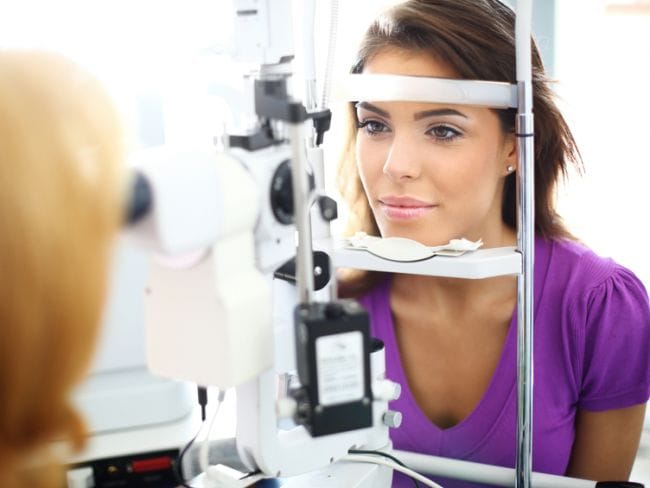World Sight Day 2020: Know The Causes, Treatment And Prevention For Visual Impairment From An Expert
 World Sight Day: The prevalence of visual impairment and blindness is higher in patients older than 50 years with cataract being the most frequent cause. More than 90% cases of cataract-related visual impairment and blindness are avoidable.
World Sight Day: The prevalence of visual impairment and blindness is higher in patients older than 50 years with cataract being the most frequent cause. More than 90% cases of cataract-related visual impairment and blindness are avoidable.
World Sight Day 2020: This day is observed on October 8 across the world. Visual impairment is a serious global health problem which significantly impacts the personal, social and economic life of the affected individuals and their families. The International Agency for the Prevention of Blindness (IAPB) estimates that about 2.2 billion people suffer from visual impairment worldwide; of these, a total of one billion cases may be preventable or treatable. The National Blindness and Visual Impairment Survey (2015-19) findings released by the Union Ministry of Health and Family Welfare in 2019 reported the overall prevalence of visual impairment in our country to be 2.55%, with 0.36% of the population suffering from blindness.
World Sight Day: Visual impairment and blindness: What you need to know
The prevalence of visual impairment and blindness is higher in patients older than 50 years with cataract being the most frequent cause. More than 90% cases of cataract-related visual impairment and blindness are avoidable. In contrast, uncorrected refractive error is the leading cause of visual impairment in patients between 0 to 49 years of age, with corneal opacity most commonly implicated in blindness in this age-group.
Retinopathy of Prematurity (ROP) is an important emerging cause of preventable blindness observed in neonates in our country which may affect about 20% of babies who are born prematurely (gestational age ≤ 34 weeks), have a low birth weight (<2000gms) or have received intensive neonatal care after birth. Routine screening of all preterm babies at birth by a trained ophthalmologist for early detection of sight threatening ROP, followed by prompt retinal laser or surgical therapy if needed is highly successful in preventing vision loss in these neonates.
WHO estimates that about 19 million children are visually impaired globally, with the major burden borne by the low-middle income countries situated in Africa and Asia.
Causes of visual impairment and blindness
Corneal opacity secondary to vitamin A deficiency is still an important cause of visual impairment amongst children less than 5 years of age; however, its prevalence has declined over the past years. Uncorrected refractive error is the most common cause of visual impairment amongst school going and adolescent population with over 12 million children affected worldwide.
Other important causes of preventable blindness amongst the school-going age group in our country are ocular trauma, commonly sustained during play or celebration of festivals, and ocular chemical injuries associated with bursting of chuna (lime) packets. A staggering 12-20% of all pediatric eye complaints presenting to a clinician may be attributed to ocular trauma in India, and the resulting blindness and visual impairment is entirely preventable by averting the inciting event.
Cataracts
Cataract accounts for 71.2% cases of visual impairment and 66.2% cases of blindness in patients older than 50 years of age in our nation.
The COVID-19 pandemic has overwhelmed the health sector and adversely impacted ophthalmic care as well. Crisis management in these challenging times has led to a temporary cessation of non-emergency health services and the stringent lockdown measures have restricted patient mobility and their accessibility to health care services. The National Programme for Control of Blindness (NPCB) data (2018-2019) estimated the pending cataract surgery load to stand at approximately 947,866 cases in our country.
This backlog has been compounded during the pandemic, further adding to our statistics of avoidable and curable blindness. As we slowly limp towards a new normal, the need of the hour is to devise an efficient system of triaging while planning surgeries, so as to prioritize the cases based on exigency.
The National Blindness and Visual Impairment Survey 2015-19 reported that approximately 22.1% cases of blindness may be attributed to a lack of awareness, which further highlights the urgent need to promote awareness amongst public.
(Dr. Jeewan S. Titiyal, Professor & Head - Cornea, Cataract and Refractive Surgery Services, Dr. RP Centre for Ophthalmic Sciences, AIIMS, New Delhi)
Disclaimer: The opinions expressed within this article are the personal opinions of the author. NDTV is not responsible for the accuracy, completeness, suitability, or validity of any information on this article. All information is provided on an as-is basis. The information, facts or opinions appearing in the article do not reflect the views of NDTV and NDTV does not assume any responsibility or liability for the same.









